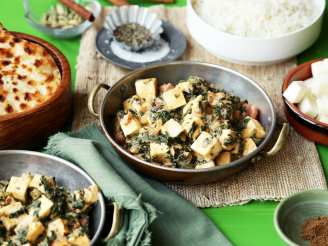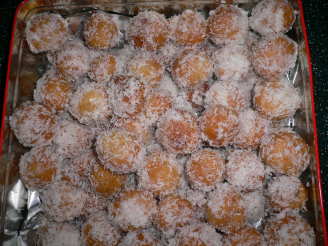Gulab Jamun
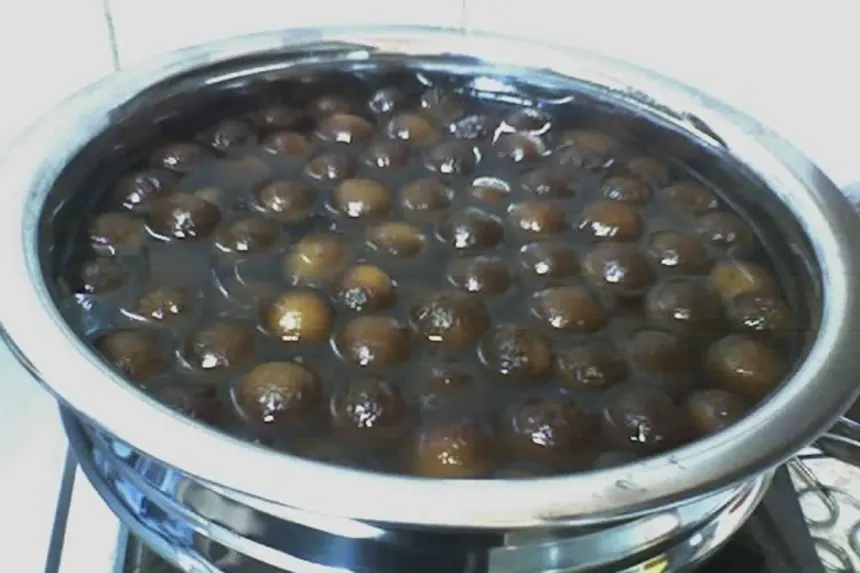
photo by Everskeptikal

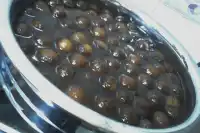
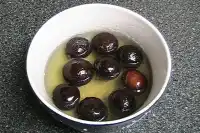

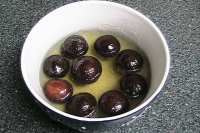
- Ready In:
- 50mins
- Ingredients:
- 12
- Yields:
-
24 gulab jamuns
ingredients
-
Traditional Method
- 1 liter milk
- 1 1⁄2 tablespoons flour
-
Powdered-Milk Method
- 2 cups powdered milk
- 1 1⁄2 tablespoons self-rising flour
- 1⁄2 cup warm milk
- 1 teaspoon ghee or 1 teaspoon butter
-
Scented Syrup
- 2 cups sugar
- 2 cups water
- 1 tablespoon rose water or 1/2 teaspoon rose extract
- 1⁄2 teaspoon saffron (powdered, and optional)
- 1⁄2 teaspoon cardamom powder (optional)
-
Ghee
- 1 lb butter, -unsalted is best but salted will work in a pinch
directions
- To Make Ghee: Put the butter in a good saucepan and bring to a boil on medium heat. Then reduce to low. Now this is what will happen as the butter slowly simmers. Moisture will be evaporated out of the ghee. The white protein-solids from the butter will sink down to the bottom of the pan and slowly turn golden. A foam will rise to the surface, and as it cooks will form a bit of a crust. The butter will cook into a gold color as well, and it will have a slightly nutty smell. When the moisture is gone, the ghee is done. Decant the oil and save the delicious golden buttery bits on the bottom of the pan for toast, or mixed with veggies or potatoes. If you've used salted butter, you don't want to use it on toast- the salt will knock you out, but it's still good in potatoes or whatnot.
- Making the Scented Syrup: Combine sugar and water and bring to a boil for 3 minutes. Remove from heat and add rose water or essence.
- Traditional Method: Use a heavy-bottomed pan because the milk will stick. Use a non-stick pot if you have it. Boil the milk down over medium heat, while stirring, until it forms a paste. Add the flour and mix into a smooth paste. Oil your hands and roll them into uniform balls, place them onto a buttered plate and set aside.
- Powdered-Milk Method: Combine the warm milk and ghee together. Mix the powdered milk and flour together and sprinkle slowly into the wet mix to form a dough. Oil your hands and form uniform balls (about 24) and set aside on a buttered plate.
-
Cooking the jamuns:
- This is the most delicate part of the operation. Gentle, low heat is a must. Use a wok or karai for best results, with the ghee about 2.5-3 inches in depth.
- Heat the ghee on low to 215 degrees.
- Slip in the balls, one by one. They will sink. No touching at this point.
- Gently shake the pan to move the balls and keep them from getting too brown on one side. After about 5 minutes they will begin to float. You will notice them getting bigger.
- Now, use a wooden spoon or equivalent to gently agitate and keep them evenly browning.
- The ghee will slowly get hotter as the balls cook.
- After about 20 minutes, the ghee will have risen in temperature to around 245 degrees and the balls should be nice and golden.
- Remove a ball and put it in the syrup. If it doesn't collapse after 3 minutes, remove the others and add to the syrup.
- If it does collapse, fry for another 5 minutes and try again.
- Let soak for 2 hours at least before serving.
- Serve room temperature or warmed up.
- Enjoy your gulab jamuns!
Questions & Replies
Got a question?
Share it with the community!
Reviews
-
Ok this is going to be long but I will start by saying this was so good..had it for dessert tonight after Ev's Mahogany Beef Stew, which as also amazing. Ok I used the traditional method, took over an hour to reduce the milk to the right consistency but well worth it, my mistake, I have never had these before so I cut the recipe in half...big mistake..they were so, so, and I mean so good they were gone after the 2 hour soaking period in seconds...just vanished, eaten by the family of course. I think I did over cook them but they were great. I did however put a tiny bit of cardamom in the dough part and it was tasty. Thanks so much Mina, I will try the easier method probably this week and rate that also but this was a great recipe, considering I have never tried this dessert and made it to try for the first time from your recipe, thank you so much you have given me my favorite Indian dessert....until I rate the other method take care, and for anyone curious I highly recommend this. P.S. I did take photos I am in the midst of downloading will add photos prob tomorrow...was so excited to post this rating photos not yet ready...thanks
RECIPE SUBMITTED BY
MinatheBrat
Tempe, 41
<p>One of my biggest passions is for cooking. As a Personal Chef, I feel very fortunate that I get to work doing something that I love. I enjoy helping people gain more satisfaction from what they eat by working within their dietary requirements and restrictions to come up with meals that they enjoy from both taste and health aspects. <br /> <br />I love learning about food! Cookbooks are some of my favorite reads. So much of society and culture is involved with what people eat, and learning about their food is learning about them, as a culture now, as a history of a people, all the way to the individual. I find that really thrilling. <br /> <br />I'm originally from NY and I grew up in town that has a very large Italian and Asian population, so getting great ingredients for Italian and Asian food was no problem. I grew up with miso soup, my mother's garden grown tomatoes sprinkled with fresh basil, fresh mozzerella, some salt, pepper, olive oil and maybe some balsamico. My family is of mixed descent, so that we ate everything from spaetzle to chapatis! I've lived in the Southwest, where I had access to a wonderful array of Mexican ingredients and teachers, and I enjoyed delving into that cuisine. I've lived in the Deep South and had Cajun Grandmothers teach me their Gumbo, red beans and dirty rice. I'm so grateful for the wonderful diversity of this country, that we have people from all over willing to share their food and friendship. <br /> <br /><img src=http://i23.photobucket.com/albums/b399/susied214/projects/200_PACpic.jpg border=0 alt=Photo Sharing and Video Hosting at Photobucket /> <img src=http://i3.photobucket.com/albums/y53/DUCHESS13/FFF/Switzerland-FFF4.gif alt= /></p>





